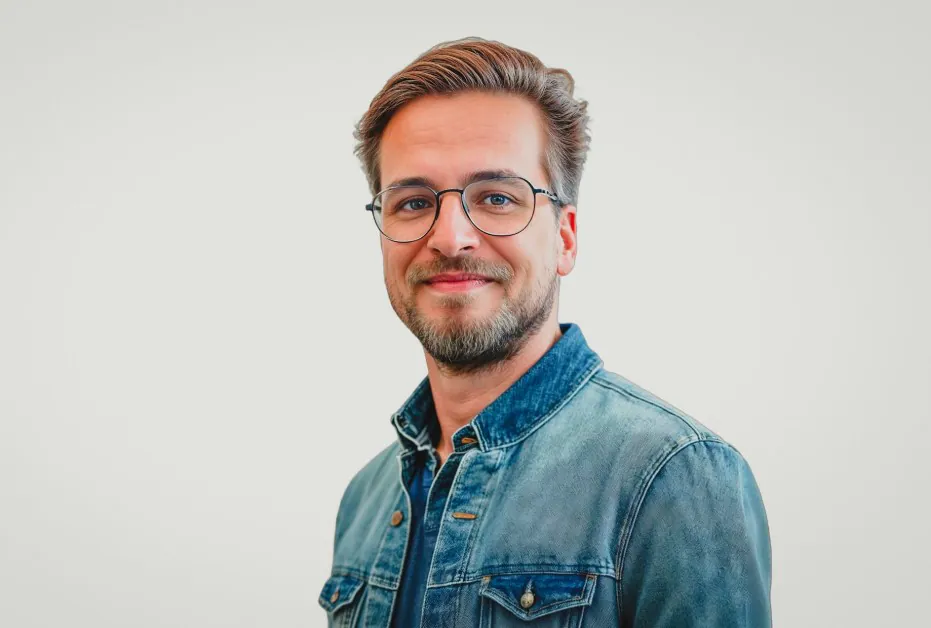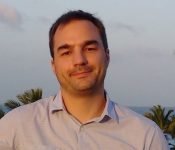Interviews
Danny Postma, Founder of HeadshotPro – Interview Series

Danny Postma is an indie hacker and is known for being a serial entrepreneur, he is also the Founder of HeadshotPro. HeadshotPro generates AI headshots that are designed to capture a users most photogenic qualities and reproduce them on a backdrop of the users choosing, with perfect facial lighting that would take hours for a real photographer to set up under even the most perfect conditions.
You’re known to be a serial entrepreneur, what was the first business that you started?
Landingfolio was my first major project. I started in 2015 when I was 21. At the time I was working as a freelance Conversion Optimization Specialist and I was struggling with creating effective landing page designs for my clients. I created Landingfolio, a design gallery showcasing the coolest landing page designs on the internet, as a side project to address this.
I didn’t know how to program at the time, so I built it using WordPress. This was much easier than I expected. The website still exists to this day and gets thousands of visitors, but it is hard to monetize, so I decided to move on to other projects.
When did you first become immersed in the world of AI?
I first became immersed in the world of AI somewhat by chance. While working on my product Headlime, which was initially a non-AI tool, a friend introduced me to GPT-3. I was intrigued by GPT-3's capabilities, so I decided to reach out directly to Greg Brockman, the CTO of OpenAI, to request access. Fortunately, I was able to get access as part of the first batch of users.
What was your first AI business?
This introduction to GPT-3 marked the beginning of my journey into AI. It was sort of a serendipitous transition from a non-AI product to an AI-based one.
While working on Landingfolio, I wrote an interactive book of 200 headlines, where you could easily input certain variables to have the headlines customized to fit your own use case. I realised this would actually be a really good software tool, so I turned it into a really simple copy spinner that did the replacing for you and called it Headlime.
Around the same time, GPT-3 was launched and as mentioned above, I got access really early. I experimented with letting GPT-3 write the templates for Headlime—I was astounded by its ability to generate copy. This led to a pivotal moment where I realized the potential of turning Headlime into an AI-powered copywriting tool.
It was a bit lucky that I was already working on a copywriting tool when a copywriting AI like GPT-3 came into the picture. I was one of the first people to implement GPT-3 in a production environment, alongside Copy.AI and a few other tools.
Could you share the genesis story behind HeadshotPro?
When stable diffusion AI was launched in September 2022, it opened up new possibilities for me. Initially, I thought about creating a stock photo website and developed something called Stock AI. However, the quality wasn't meeting expectations, and there was a concern about potential legal issues from big companies like Getty Images, known for their extensive legal resources to protect their image rights.
This concern led me to pivot. I saw Dreambooth was launching an AI service that could transform faces, and realized I was working on something quite similar. I quickly developed and launched my product within 30 hours, beating a competitor to market. ProfilePicture.AI, exploded on Twitter, generating significant sales in just a week. It was a highly shareable product, and I was fortunate to rank well in Google searches for profile pictures.
However, as the initial excitement dwindled and sales began to decrease, I knew I had to pivot again. That's when I started collaborating with David, a developer friend. We both were working on AI-related projects, and I developed a Python model that could manipulate photos into different poses. This development led me to focus on creating headshots using AI.
I launched Deep Agency and HeadshotPro simultaneously. While Deep Agency garnered a lot of press attention, it didn't translate into sales. On the other hand, HeadshotPro was an instant hit. Seeing the demand for AI-generated headshots, I decided to focus more on HeadshotPro. It was an unexpected pivot, but it demonstrates the importance of staying flexible and reacting to what the market is telling you.
What are some of the different machine learning and Generative AI algorithms that are used in the backend?
HeadshotPro might look simple at first glance, but we have a massive pipeline running in the backend to output great headshots. Most of our competitors only use Stable Diffusion, an open-source image generation model, in combination with DreamBooth, which trains on your own photos.
That’s not how we do things.
We deploy dozens of extra open-source and custom development models to 10x the output quality. We’ve been working for a full year now on our own custom models. We’re getting really close to consistently generating AI photos that are indistinguishable from real photos.
Another open-source model we use is LLaVa, a Large Language and Vision Assistant that you can prompt to ask questions about images. We use this, for example, to filter bad user uploads or remove headshot generations that are NSFW. Another model we use is Codeformer, which helps remove AI-artifacts from faces and turn them into more realistic ones.
You started HeadshotPro as a solopreneur, what are some of the challenges with transitioning to building a team?
Transitioning from being a solopreneur to building a team for HeadshotPro has been a significant challenge and a journey of personal and professional growth. One of the primary challenges I faced was the fear of hiring. Initially, I was hesitant to scale the team because of the uncertainties involved in managing people. This fear led me to automate as much as I could on my own, especially during the pre-AI times.
However, as HeadshotPro grew, I realized that I could no longer manage everything alone. The options were either to sell the business, continue as a solopreneur, or build a team. I ultimately decided that building a team was the right thing to do if I wanted to scale the business, no matter how scary it was.
This decision marked a significant shift from my identity as a solopreneur and forced me to acknowledge that I didn't have all the answers. I understood that building a team would require a different mindset and would change the goals I had for my business. It was not just about running a business anymore; it was about leading a team of people to build something together.
This shift brought a mix of excitement and fear. I was open about my inexperience with all the potential team members from the very first interview, setting the expectation that this was new territory for me and there might be bumps along the road. I started with contractors and part-time people who already had other clients, creating a safety net while I learned the ropes of team management.
Looking back, I should have started a team way earlier. I now have a small team of incredible smart and dedicated people and they do things I could have never ever done myself. It’s also way less lonely and much more fun to share your wins together.
AI headshot generators are becoming more popular, how do you differentiate HeadshotPro in a crowded space?
Photo quality is our primary differentiator from other AI headshot generators. Our competitors rely on open-source models—which, to be frank, simply aren’t good enough for realistic photo generations. By making daily iterations towards higher quality headshots, we believe that within a year our headshots will be indistinguishable from real photos, further increasing the gap between us and other less serious AI headshot generators.
Finally, we focus exclusively on professional headshots. The bulk of our competitors are moving horizontally, offering things like dating photos and cute avatars, working their way towards becoming a full-fledged photostudio. While there is clearly a market for this, our team personally sees these detours away from professional headshots as a distraction. Our sole focus is creating the highest quality, professional AI headshots. I don’t feel our competitors share this single focus.
What are some ways that your team is enhancing or optimizing the HeadshotPro experience?
It might sound cliche, but we really are obsessed with the quality of our results. Generating AI headshots that are indistinguishable from real photos is our end goal. If the model improves by 1% each day, there’s no reason why we can’t reach that goal, or get really close to it, by the end of this year.
Aside from iterative quality improvements, we’re working on improving clothing generation. We feel “virtual try on” services are going to start drumming up more interest in 2024, and we hope to parlay that tech into delivering better results for our corporate customers who often request things like matching suits for their employee’s headshots.
Then, of course, our user experience is always getting better. Right now we require 15-17 user input photos, because that’s been the magic number for us in maximizing quality. We’re working on alternative methods to make things a little easier for our customers, without compromising the photo quality we work hard to maintain.
What are some other AI products that you are working on or considering launching?
I’ve built a ton of small AI products:
- Tattoos AI: An AI-powered tattoo generator.
- Alice: A fun AI social media experiment, showing how AI can generate entirely new concept and ideas that haven’t been seen before.(https://www.thismodeldoesnotexist.co/)
- Profile Picture AI: A profile picture generator, like a (much) less professional version of HeadshotPro.
- Deep Agency: Hire virtual AI-generated models.
- Meme Morph: Turn yourself into your favorite memes.
There’s a lot of fun ones there, but I’m actually in the process of selling most of these products to fully focus on HeadshotPro. These projects haven’t got much attention from me since HeadshotPro has taken off.
Thank you for the great interview, readers who wish to learn more should visit HeadshotPro.












